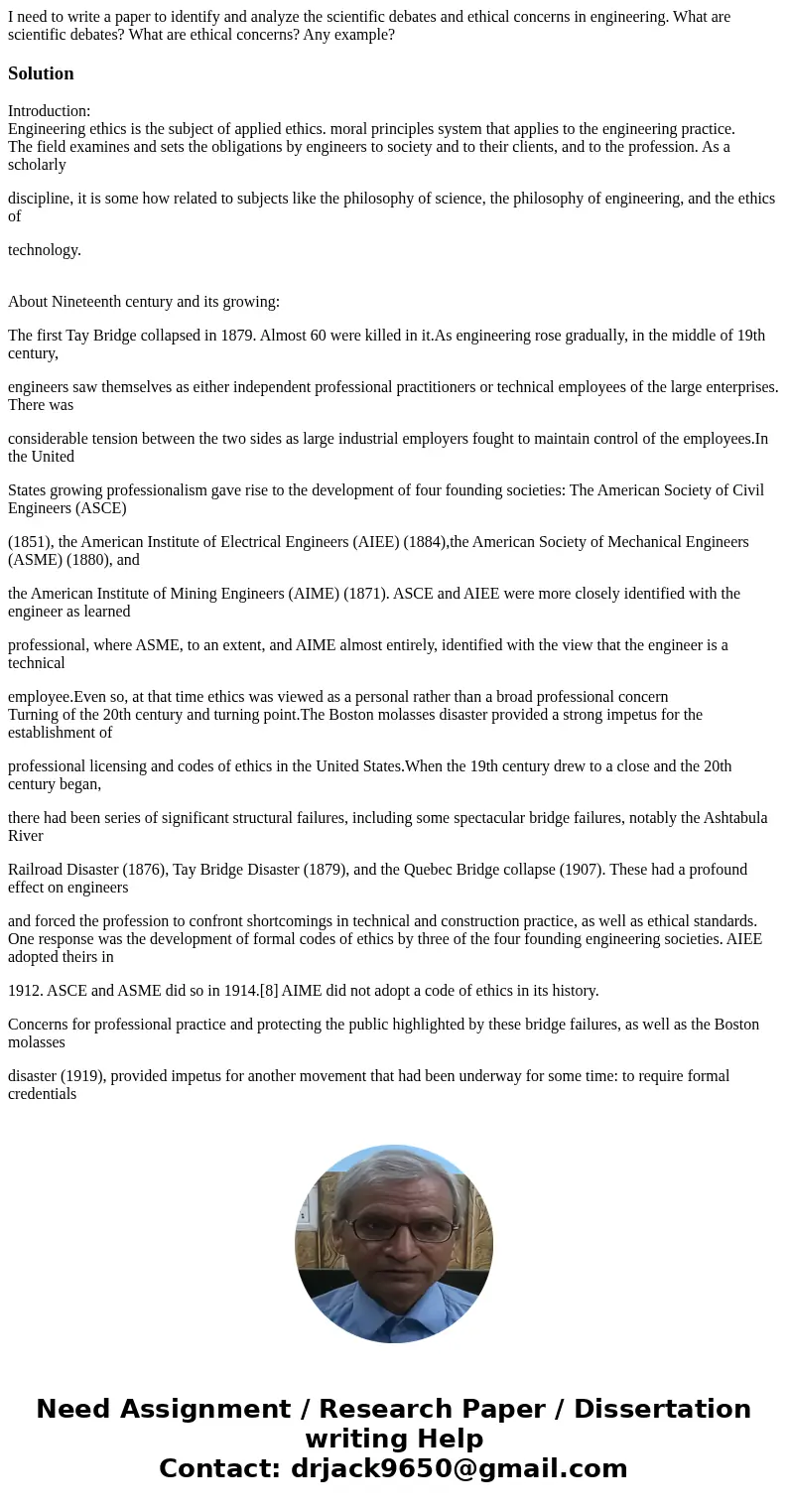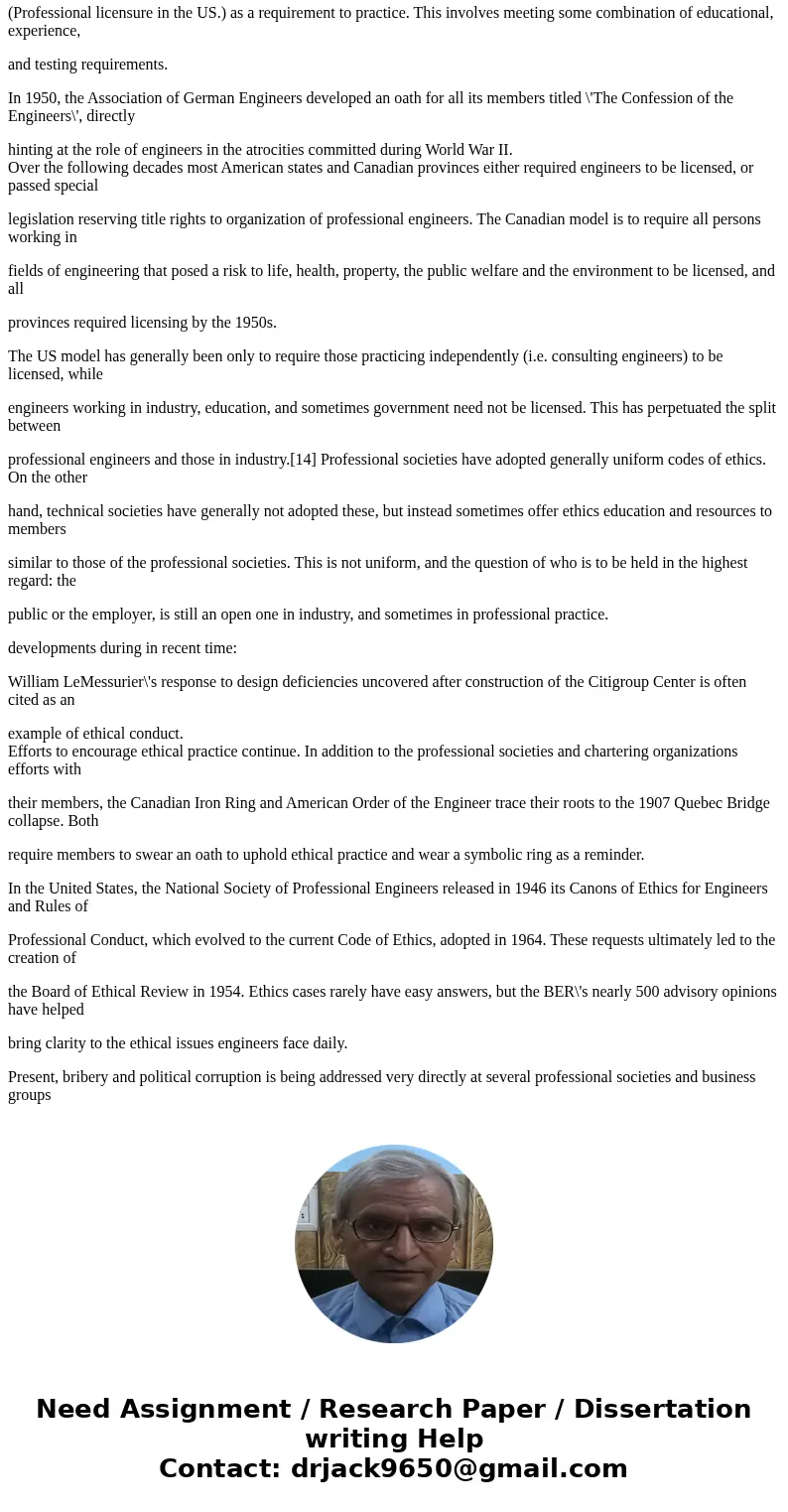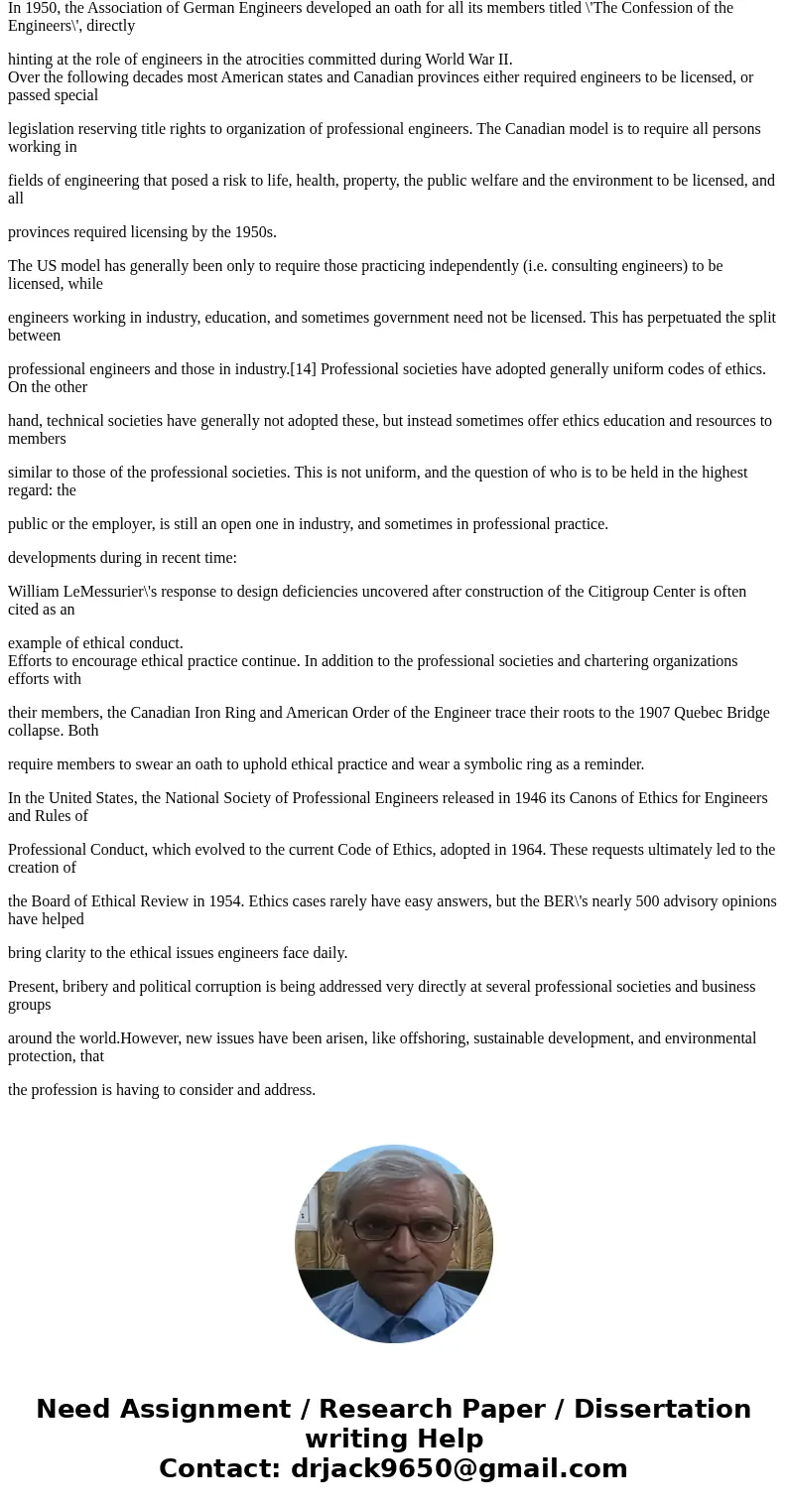I need to write a paper to identify and analyze the scientif
I need to write a paper to identify and analyze the scientific debates and ethical concerns in engineering. What are scientific debates? What are ethical concerns? Any example?
Solution
Introduction:
Engineering ethics is the subject of applied ethics. moral principles system that applies to the engineering practice.
The field examines and sets the obligations by engineers to society and to their clients, and to the profession. As a scholarly
discipline, it is some how related to subjects like the philosophy of science, the philosophy of engineering, and the ethics of
technology.
About Nineteenth century and its growing:
The first Tay Bridge collapsed in 1879. Almost 60 were killed in it.As engineering rose gradually, in the middle of 19th century,
engineers saw themselves as either independent professional practitioners or technical employees of the large enterprises. There was
considerable tension between the two sides as large industrial employers fought to maintain control of the employees.In the United
States growing professionalism gave rise to the development of four founding societies: The American Society of Civil Engineers (ASCE)
(1851), the American Institute of Electrical Engineers (AIEE) (1884),the American Society of Mechanical Engineers (ASME) (1880), and
the American Institute of Mining Engineers (AIME) (1871). ASCE and AIEE were more closely identified with the engineer as learned
professional, where ASME, to an extent, and AIME almost entirely, identified with the view that the engineer is a technical
employee.Even so, at that time ethics was viewed as a personal rather than a broad professional concern
Turning of the 20th century and turning point.The Boston molasses disaster provided a strong impetus for the establishment of
professional licensing and codes of ethics in the United States.When the 19th century drew to a close and the 20th century began,
there had been series of significant structural failures, including some spectacular bridge failures, notably the Ashtabula River
Railroad Disaster (1876), Tay Bridge Disaster (1879), and the Quebec Bridge collapse (1907). These had a profound effect on engineers
and forced the profession to confront shortcomings in technical and construction practice, as well as ethical standards.
One response was the development of formal codes of ethics by three of the four founding engineering societies. AIEE adopted theirs in
1912. ASCE and ASME did so in 1914.[8] AIME did not adopt a code of ethics in its history.
Concerns for professional practice and protecting the public highlighted by these bridge failures, as well as the Boston molasses
disaster (1919), provided impetus for another movement that had been underway for some time: to require formal credentials
(Professional licensure in the US.) as a requirement to practice. This involves meeting some combination of educational, experience,
and testing requirements.
In 1950, the Association of German Engineers developed an oath for all its members titled \'The Confession of the Engineers\', directly
hinting at the role of engineers in the atrocities committed during World War II.
Over the following decades most American states and Canadian provinces either required engineers to be licensed, or passed special
legislation reserving title rights to organization of professional engineers. The Canadian model is to require all persons working in
fields of engineering that posed a risk to life, health, property, the public welfare and the environment to be licensed, and all
provinces required licensing by the 1950s.
The US model has generally been only to require those practicing independently (i.e. consulting engineers) to be licensed, while
engineers working in industry, education, and sometimes government need not be licensed. This has perpetuated the split between
professional engineers and those in industry.[14] Professional societies have adopted generally uniform codes of ethics. On the other
hand, technical societies have generally not adopted these, but instead sometimes offer ethics education and resources to members
similar to those of the professional societies. This is not uniform, and the question of who is to be held in the highest regard: the
public or the employer, is still an open one in industry, and sometimes in professional practice.
developments during in recent time:
William LeMessurier\'s response to design deficiencies uncovered after construction of the Citigroup Center is often cited as an
example of ethical conduct.
Efforts to encourage ethical practice continue. In addition to the professional societies and chartering organizations efforts with
their members, the Canadian Iron Ring and American Order of the Engineer trace their roots to the 1907 Quebec Bridge collapse. Both
require members to swear an oath to uphold ethical practice and wear a symbolic ring as a reminder.
In the United States, the National Society of Professional Engineers released in 1946 its Canons of Ethics for Engineers and Rules of
Professional Conduct, which evolved to the current Code of Ethics, adopted in 1964. These requests ultimately led to the creation of
the Board of Ethical Review in 1954. Ethics cases rarely have easy answers, but the BER\'s nearly 500 advisory opinions have helped
bring clarity to the ethical issues engineers face daily.
Present, bribery and political corruption is being addressed very directly at several professional societies and business groups
around the world.However, new issues have been arisen, like offshoring, sustainable development, and environmental protection, that
the profession is having to consider and address.



 Homework Sourse
Homework Sourse